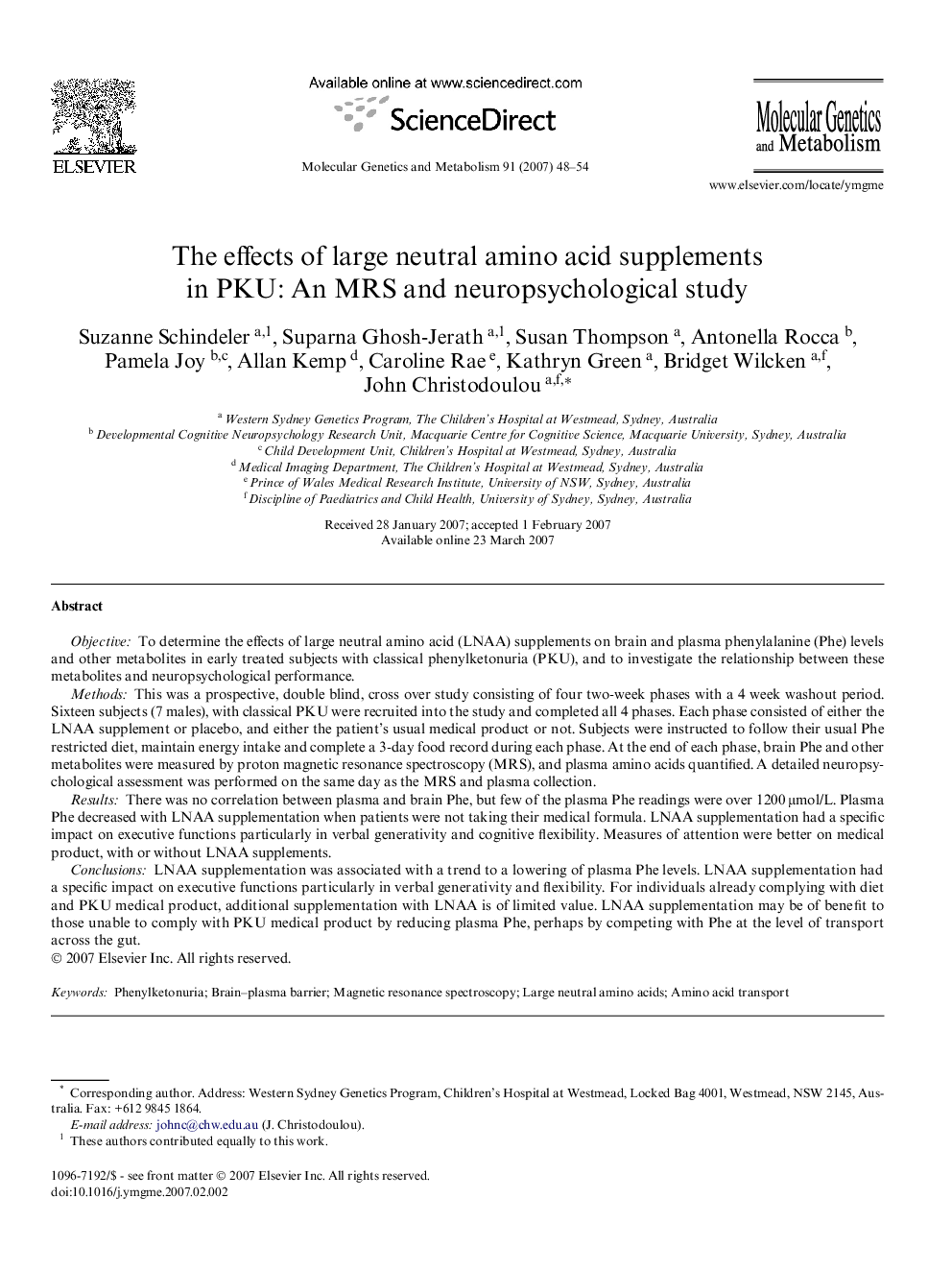| Article ID | Journal | Published Year | Pages | File Type |
|---|---|---|---|---|
| 2000125 | Molecular Genetics and Metabolism | 2007 | 7 Pages |
ObjectiveTo determine the effects of large neutral amino acid (LNAA) supplements on brain and plasma phenylalanine (Phe) levels and other metabolites in early treated subjects with classical phenylketonuria (PKU), and to investigate the relationship between these metabolites and neuropsychological performance.MethodsThis was a prospective, double blind, cross over study consisting of four two-week phases with a 4 week washout period. Sixteen subjects (7 males), with classical PKU were recruited into the study and completed all 4 phases. Each phase consisted of either the LNAA supplement or placebo, and either the patient’s usual medical product or not. Subjects were instructed to follow their usual Phe restricted diet, maintain energy intake and complete a 3-day food record during each phase. At the end of each phase, brain Phe and other metabolites were measured by proton magnetic resonance spectroscopy (MRS), and plasma amino acids quantified. A detailed neuropsychological assessment was performed on the same day as the MRS and plasma collection.ResultsThere was no correlation between plasma and brain Phe, but few of the plasma Phe readings were over 1200 μmol/L. Plasma Phe decreased with LNAA supplementation when patients were not taking their medical formula. LNAA supplementation had a specific impact on executive functions particularly in verbal generativity and cognitive flexibility. Measures of attention were better on medical product, with or without LNAA supplements.ConclusionsLNAA supplementation was associated with a trend to a lowering of plasma Phe levels. LNAA supplementation had a specific impact on executive functions particularly in verbal generativity and flexibility. For individuals already complying with diet and PKU medical product, additional supplementation with LNAA is of limited value. LNAA supplementation may be of benefit to those unable to comply with PKU medical product by reducing plasma Phe, perhaps by competing with Phe at the level of transport across the gut.
